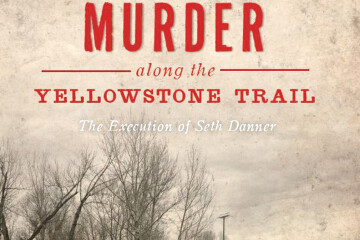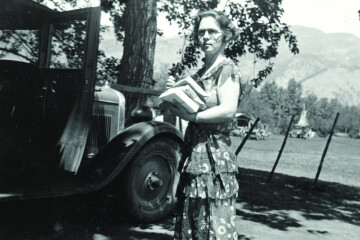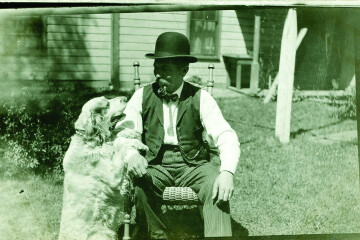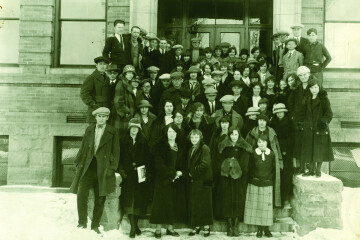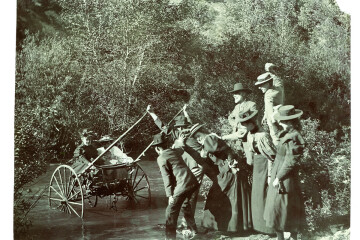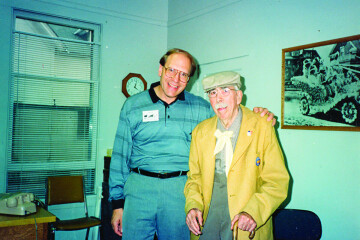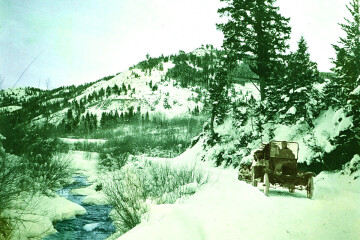Atrocity Most Foul: An 1889 Murder Mystery
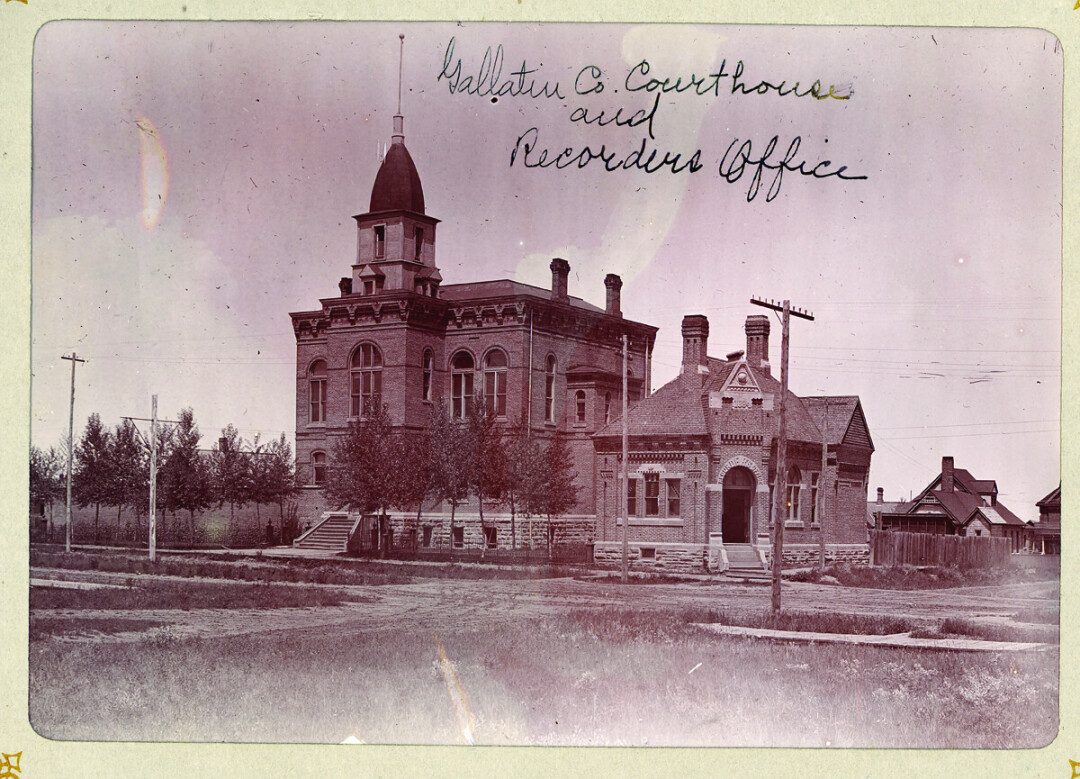
On Sunday, March 3, 1889, a report of a most disturbing nature reached Bozeman authorities: a deceased woman was found at a homestead southwest of Bozeman. The Bozeman Courier reported on March 7, “... startling news was brought to the city that Mrs. Catherine Benz Walters had committed suicide.” Almost immediately, locals wondered if Catherine Walter was murdered.
Catherine’s story began several years earlier, when she, her husband Andrew Benz, and their children settled in the Gallatin Valley. The family had local connections: Catherine’s sister was married to Jacob Spieth, a co-founder of Bozeman’s Spieth and Krug brewery. Andrew and Catherine Benz homesteaded a 160-acre farm southwest of Bozeman in 1884. Their property was located along what is today the southern end of Fowler Lane, just north of the intersection of South 19th Avenue and Hyalite Canyon Road. Catherine and Andrew had five children: George, Andrew C., Lizzie, Millie, and Wilhelm. Andrew Benz passed away after a lengthy illness in late February 1888, leaving Catherine to care for the property and the couple’s two youngest children on her own.
Catherine (or Katie or Katrina, as she is referred to in various records) married Jacob Walter (or Walters as, again, records vary) in November 1888. According to a Bozeman Courier newspaper article published at the time of her death, friends were surprised by this second marriage. Catherine was 45 years old, and her new husband only 29. Neighbors told the Courier that the couple argued on numerous occasions – an ominous sign.
The relationship unraveled completely in early March 1889. The Bozeman Courier outlined the sequence of events in detail in the article published on March 7. Jacob and Catherine Walter were observed returning home from a trip to Bozeman on the evening of Thursday, February 28. This was the last time friends and neighbors saw Mrs. Walter alive. Jacob Walter traveled back to Bozeman on Saturday, accompanied by his stepson, Wilhelm Benz, Catherine Walter’s youngest boy. The Courier article explained, “Here he [Jacob] provided the boy with a new suit of clothes, brought him candy, etc., and proceeded to get very drunk.”
On Sunday morning, March 3, Jacob Walter returned home with his stepdaughter, Millie Benz, and a friend, J.R. DeMille. The Courier continued, “Arriving home, Walter gave the girl the key to the house, which she opened, and proceeded to look for her mother. Walter in the meantime put the team [horses] away and DeMille waited outside till invited in. In a moment the girl came out saying her mother was upstairs, dead. Walter rushed into the house, DeMille following. As DeMille got to the head of the stairs, Walter met him and was loud in lamentations and apparent grief.”
Though the first paragraph of the Courier article on March 7 surmised Catherine committed suicide, the writer quickly abandoned that theory in favor of murder. According to the article, the coroner assembled a party to investigate the death, and the group traveled to the farm southwest of Bozeman. The party observed the deceased Catherine Walter “in an upper chamber [of the house], grasping a razor in her right hand. The way the razor was held was such that she could not have inflicted the wounds observable and the jury were not slow in coming to the conclusion that a murder had been committed.” Besides a deep, wide gash to the throat, the coroner’s jury also found cuts on the right side of Catherine’s body. A piece of cloth with finger marks visible appeared to have been a temporary resting place for the bloody razor, and more blood was found on the main floor of the home. Authorities examined Jacob Walter’s clothing and found a few small drops of blood.
Catherine Walter’s two young children, Millie and Wilhelm, were questioned during the inquest. Wilhelm claimed that Jacob Walter was the last person to leave the house before the pair left for Bozeman on Saturday morning. The Courier reported Wilhelm’s testimony, “The boy said that on Friday his stepfather and his mother had been drinking and quarrelling all day. On Saturday morning the quarrel continued and Mrs. Walter threatened to go away, put on her overshoes, threw a shawl out of a window, etc. Walter knocked his wife down in the bedroom and closed the door. The boy then went outdoors and played till his stepfather came out. Walter took the boy to the barn and got a team ready to come to town. They then went to the house and Walter got a cold lunch. The boy asked for his mother and was told she was in the bedroom fixing her hair. He [Wilhelm] went outdoors, looked in the bedroom window and did not see her. Walter fixed the boy for travel, locked the door and came to town.” The Courier reported that investigators found overshoes on Catherine’s body, a shawl on the ground outside the window, and food on the table. The supposition was that the murder occurred on the main floor of the home, and the killer then carried Catherine’s body upstairs.
The sensational account of the events in the newspaper certainly contained preconceived opinions about the guilty party. This wasn’t uncommon for news reports in the nineteenth century. The Courier article, written just days after Catherine’s death, placed blame squarely on the shoulders of Jacob Walter. Suspicion also fell on her son George Benz, about whom, the Courier reported, “It has been said... was not a dutiful and appreciative son.” Jacob Walter was taken into custody and committed to the county jail on March 3, 1889. In the jail register, the reason for admittance was listed as “Murder in the 1st Deg.,” with the added notation of “held without bail.”
Directly below Jacob Walter in the prisoner record book is Catherine’s son George Benz, who was arrested on March 4. George was held on a Coroner’s Warrant and listed as “Suspected of Murder.” In the Courier’s view, George’s arrest was more for his protection than because of any real suspicion of guilt. Bozeman Mayor John Bogert formed a detachment to temporarily guard the jail from possible vigilante action. Bogert did have cause to be concerned about mob activity. Just sixteen years earlier, in February 1873, enraged locals broke into the small log cabin jail north of Main Street near Bozeman Creek and hanged two prisoners. Fortunately, in March 1889, vigilante action was avoided. Catherine’s son George Benz was released from the county jail on March 5, by order of the coroner.
It is unclear how long Jacob Walter remained incarcerated. Newspaper reports suggest Walter was arraigned on March 7 before a local probate judge, and his case put on the schedule for the next meeting of the grand jury in Bozeman. The Montana Territorial court (statehood was not achieved until November 1889) convened at the end of May, and the Courier specifically noted Jacob Walter’s first-degree murder charge among other local cases on the docket. On June 6, the Avant Courier reported that the case, Territory vs. Jacob Walter, was granted a change of venue to Park County.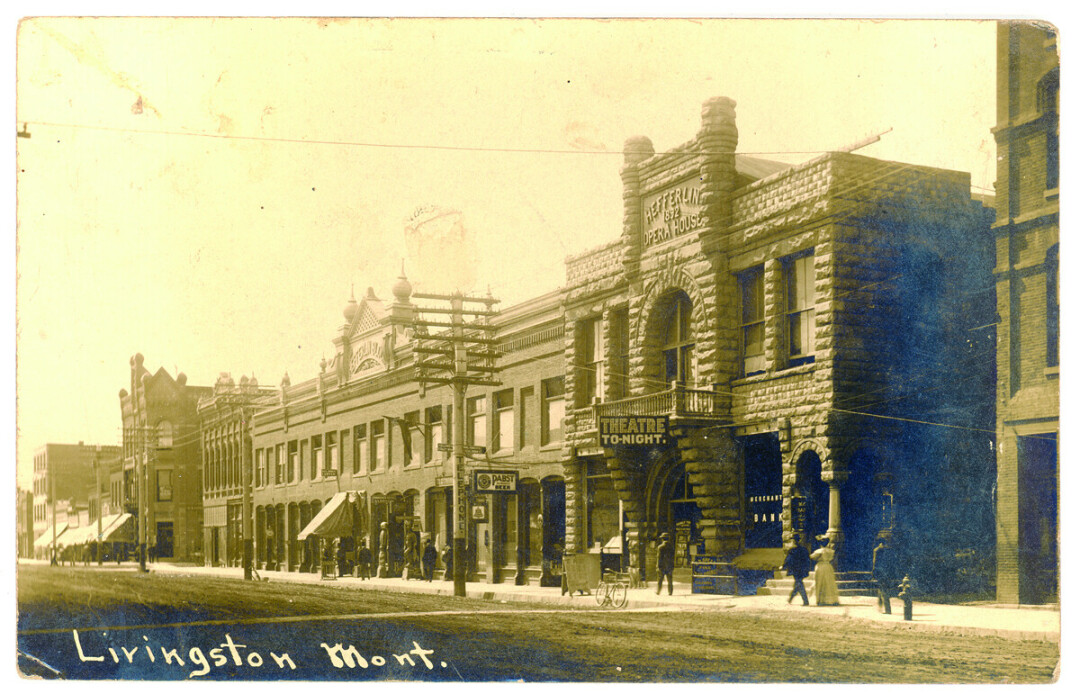
Jacob Walter’s trial was held in Livingston during the week of September 23, 1889. The Courier claimed that 123 witnesses from the Bozeman area travelled to Livingston for the trial, although no details were published in the newspapers. The proceedings concluded on September 26 and the jury began deliberations. The Livingston Enterprise published the verdict two days later: “In the case of Jacob Walters, charged with murder, the jury was charged and retired Thursday afternoon. About midnight they returned a verdict of not guilty, and the prisoner was discharged.” The not guilty verdict stirred up angry sentiment, in both Livingston and Bozeman. According to an Enterprise report a week after the trial ended, “... Walter’s demeanor had been anything but credible from the time of his release, and that his actions had not only disgusted the better class of people, but had inspired a desire on the part of many to rid the city of his presence.” The news story went on to say that rumors circulated of a “necktie party,” or vigilante action.
Just one week after his acquittal, Jacob Walter fled Livingston. The Enterprise recounted that on the evening of Friday, October 4, Walter’s friends, fearing for his safety, hired a carriage for his escape. The driver was awakened in the middle of the night, paid, and instructed to proceed to a local lumber yard to pick up passengers. “There, the driver was met by several, to him unknown men who, enjoining strict silence, mounted the carriage and ordered it started for Big Timber without delay. The trip to that place was made by daybreak, by a rapid drive over a hard road, and without light of any kind to cheer them on the journey, so cautious were the occupants lest their whereabouts should become known.” Once in Big Timber, one of these mysterious men was revealed to be Jacob Walter, who, according to the account, quietly left the area on a train while his friends returned home to Livingston and Bozeman.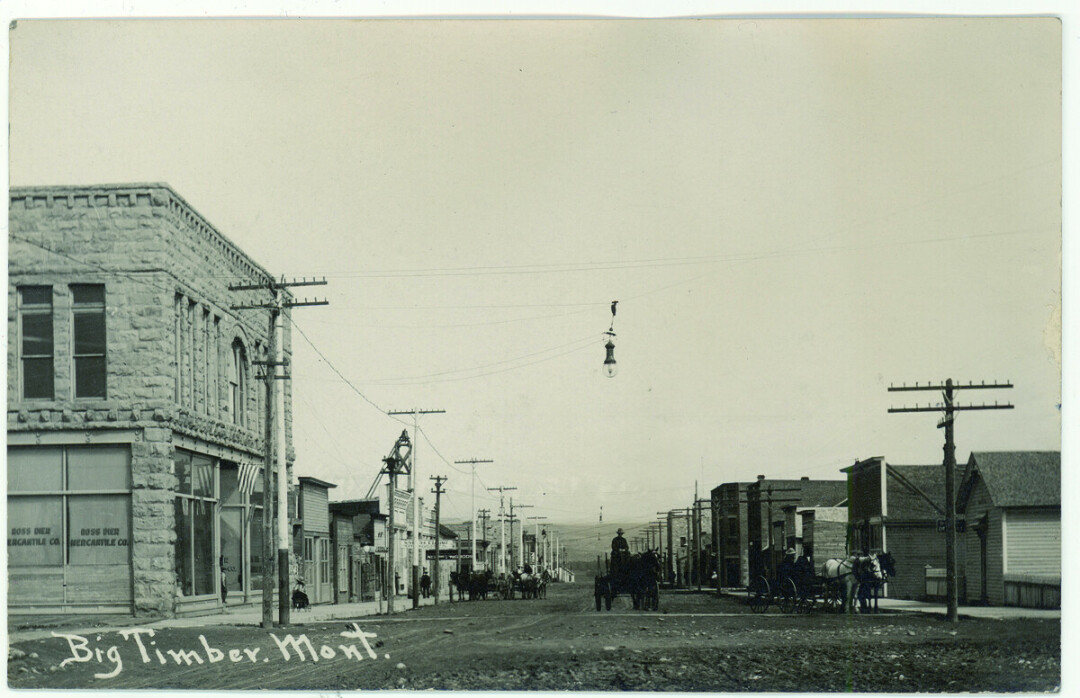
Probate Court records filed on March 25, 1889, describe the substantial property that belonged to Catherine Walter at the time of her death. Her primary assets included the 160-acre farm and homestead, along with interest in an additional 80 acres of land. Household goods, farm equipment, and livestock were also listed. An appraisal done in early May 1889 valued the entire estate at over $4,000. This is equivalent to nearly $133,000 today. While the full truth about Catherine Walter’s death will forever remain a mystery, the Courier was certainly correct when it described the tragedy as “an atrocity most foul.”

